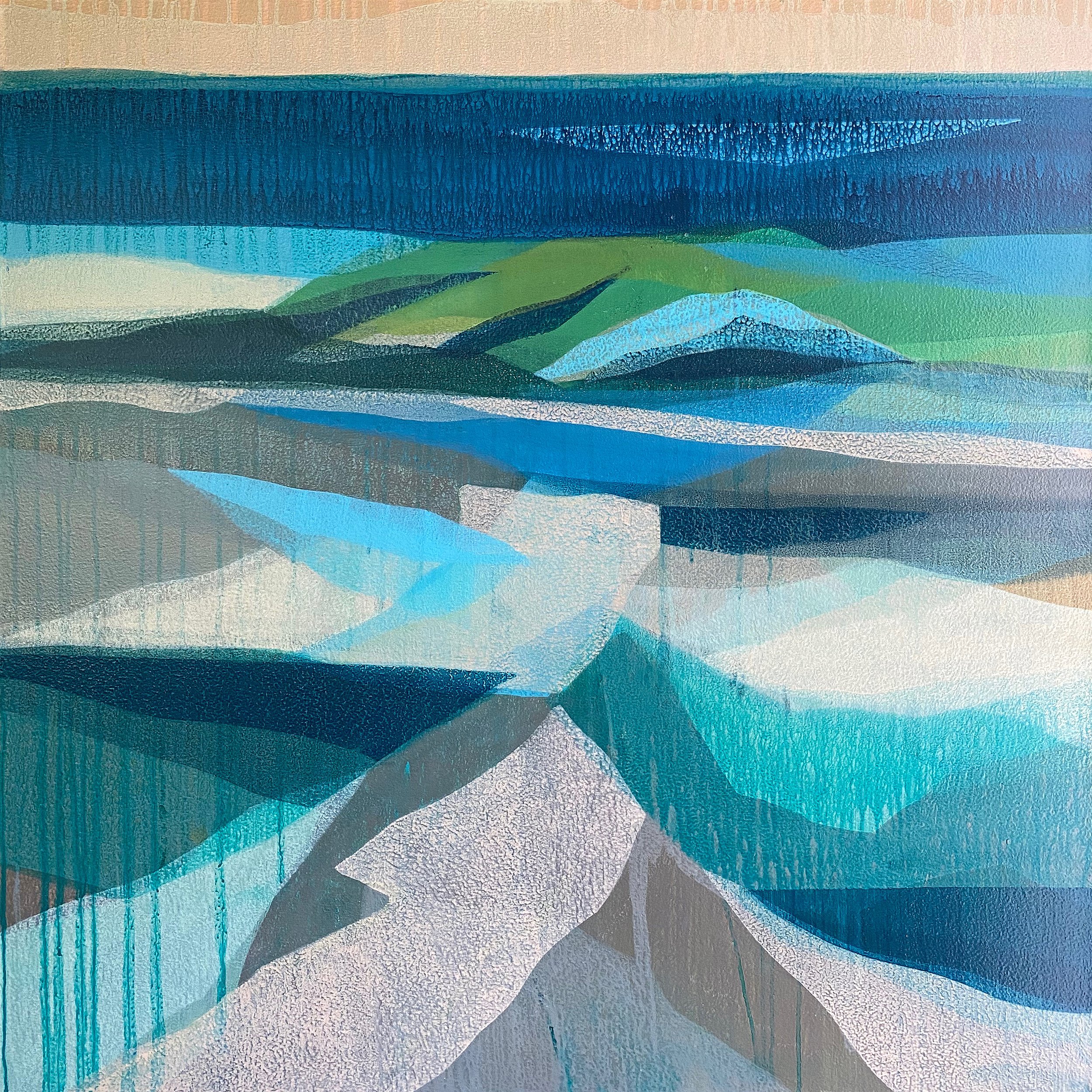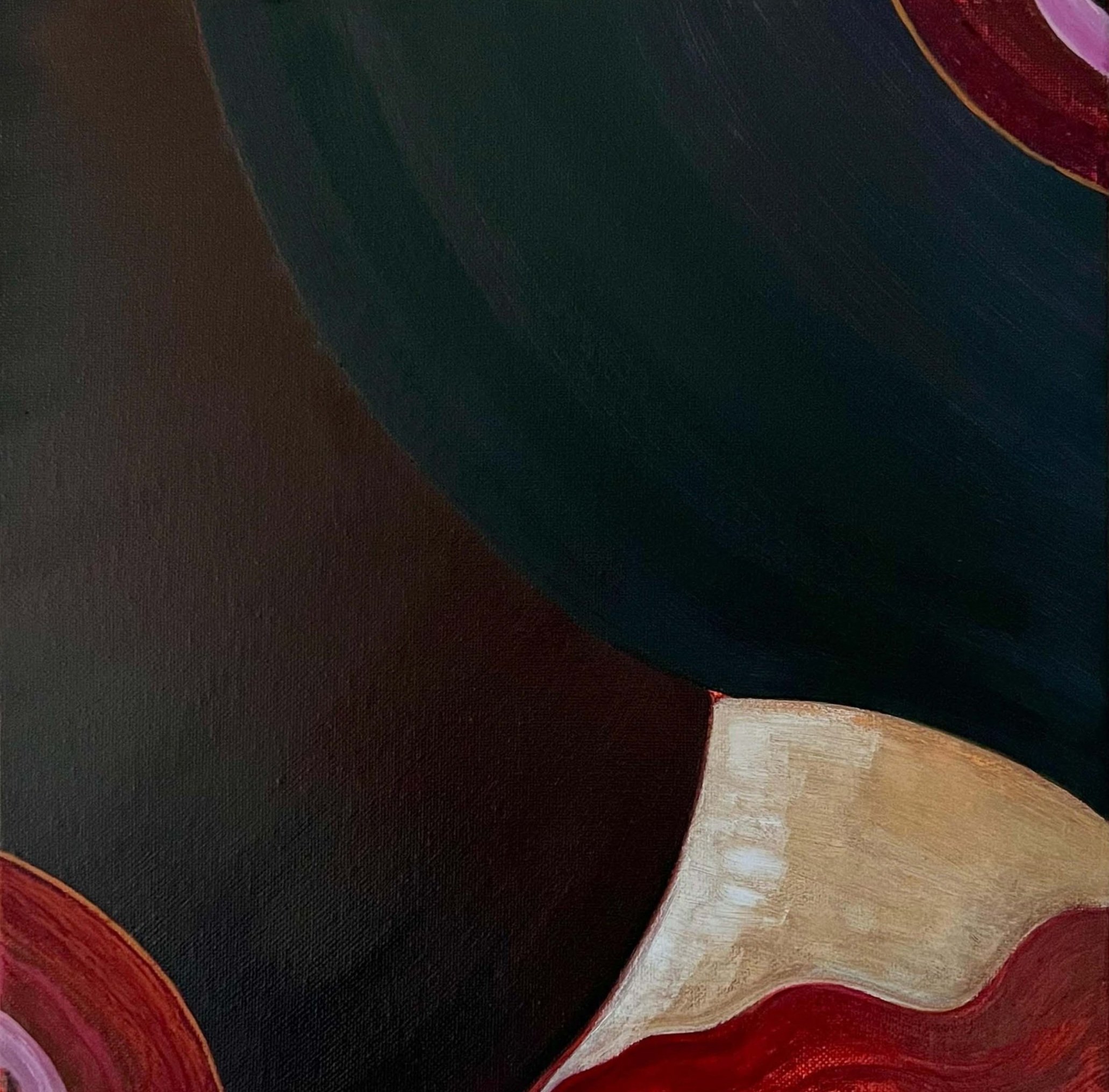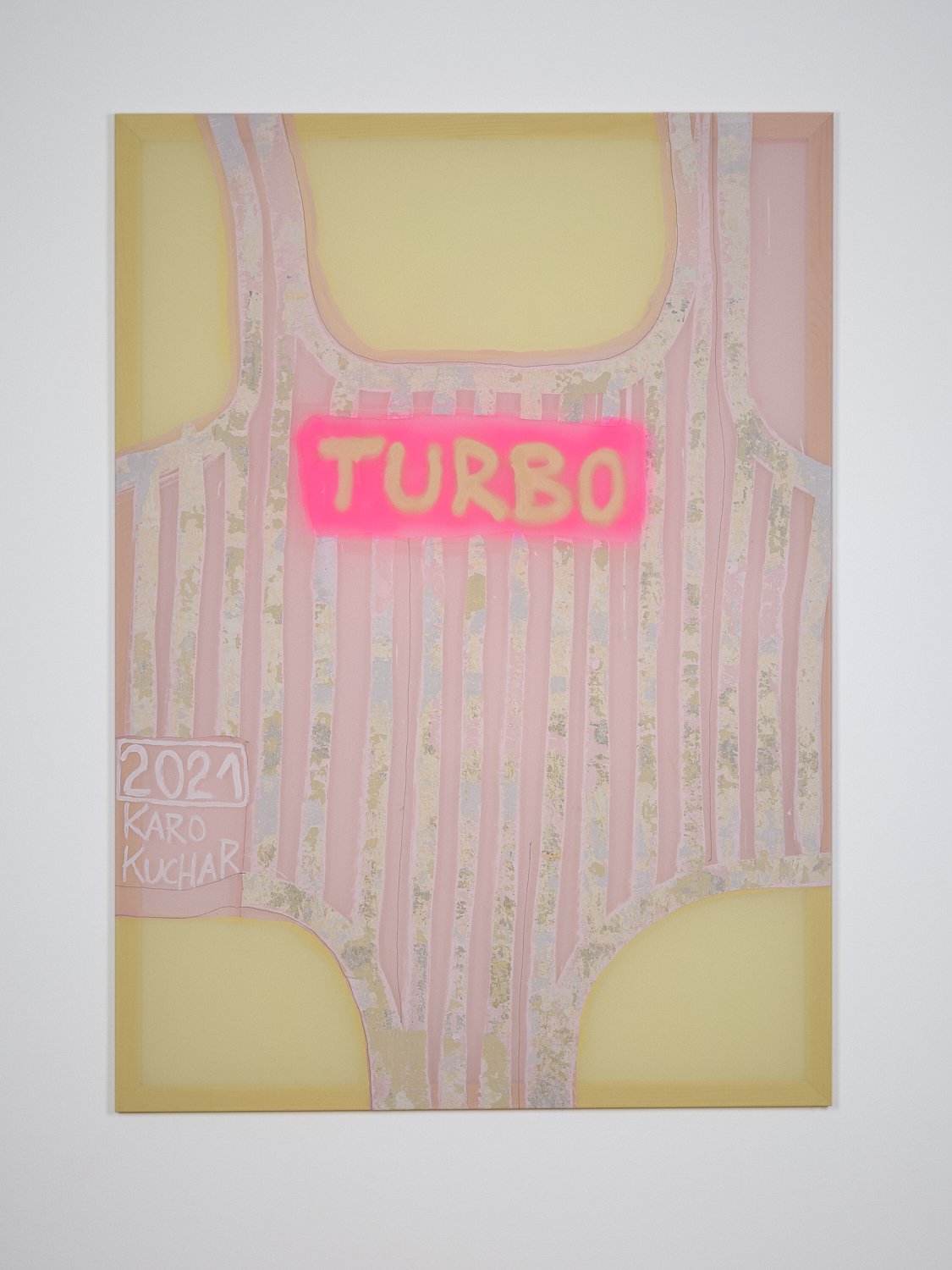Artists share their process
7 Artists exhibiting at Future Fair 2023 tell us about their process
Brittany Miller, A Play About A Passing Storm, 2022. Oil on canvas, 50 x 72 inches. Courtesy of the artist and Steve Turner Gallery, Los Angeles & New York.
We asked seven talented artists featured in this year’s fair to tell us about their artistic process; here’s what they told us.
KATHERINE SANDOZ Presented BY LANEY CONTEMPORARY
“I tend to begin all works with a site location and, at the same time, conduct extended research around the site's ecology, geology, history, associated language and literature. My first careers in advertising and education spurred an ardent affair with research, reexamination and multi-disciplinary study -- all of which inform the series-driven works. Drawings and small painted studies follow the reading, listening, watching. Typically, a year passes between first "meeting" the subject and executing the final works on canvas which gives time to build the layers of paint as well as layers of understanding the subjects.”
Katherine Sandoz, (aurora) seafoam, 2020. Water-based media on canvas, 36 x 36 in. Courtesy of the artist and Laney Contemporary, Savannah, GA.
Katherine Sandoz, (sufa 19) green island sound no2, 2019. Water-based media on canvas, 48 x 48 in. Courtesy of the artist and Laney Contemporary, Savannah, GA.
Katherine Sandoz, (aurora) waterlilies, 2020. Water-based media on canvas, 30x30in. Courtesy of the artist and Laney Contemporary, Savannah, GA.
Gracelee lawrence Presented by patrick mikhail gallery
“I work between digital and physical reality, using 3D scanning, 3D printing, virtual reality sculpting, and various other digital tools to manipulate data that turns into my sculptures. The files I use come from a breadth of sources, ranging from scans to digitally created to purchased files. These disparate components collide in my sculptures, taking on new meaning in their proximity to one another. My objects are most often quite large, so they are printed in components that create a checkerboard-like pattern on the final forms, linking them to histories of quilting or tiling.”
Gracelee Lawrence, Talk the Fire out of a Burn, 2022. Plastic, dimensions variable. Courtesy of the artist and Patrick Mikhail Gallery, Montréal, Canada.
Gracelee Lawrence, Those Dimensionless Feelings, 2022. Silk, PDA, 3D print steel, 165x65x110 cm. Courtesy of the artist and Patrick Mikhail Gallery, Montréal, Canada.
Laura Arteaga Charlton presented by ARDEN+WHITE Gallery
“I'm a printmaker who works almost exclusively with trash and recycled/found objects. My favorite material is used cardboard packaging, and recently I've been focusing on McDonald's packaging (happy meal, nuggets, and fries boxes) as well as the fragments of a frozen pizza box I found. I apply ink directly to the surface of the cardboard using traditional intaglio and relief printing techniques to create multi-layered monoprints on various materials, including my own papers that I make by hand from junk mail, recycled cardboard, and invasive plants that grow around my studio. I first started printing cardboard boxes in 2009, and my fascination with this material has only grown over the years. I'm interested in these materials for their formal qualities, their textures, and mark-making potential, as well as for their significance as cultural artifacts. I work with them in an intuitive and non-linear way, sampling, layering, composing, and rearranging into various provisional structures. I tend to work with the same pieces of packaging over many months and years, printing them hundreds of times as they slowly change form and eventually disintegrate.”
Laura Artega Charlton, Happy Meal 15, 2022. Monoprint. Courtesy of the artist and ARDEN+WHITE GALLERY, New York, NY.
Laura Artega Charlton, Happy Meal 16, 2022. Monoprint. Courtesy of the artist and ARDEN+WHITE GALLERY, New York, NY.
Laura Artega Charlton, Happy Meal 1, 2022. Monoprint, 15x23in. Courtesy of the artist and ARDEN+WHITE GALLERY, New York, NY.
BRITTANY MILLER Presented by steve turner
“I draw directly on the canvas with charcoal first, putting the figures down at the scale that I want, then filling in the environment. I usually know most of what I want the painting to do when I start, and I keep track using thumbnail sketches mapping out all of its pieces. If there are smaller shapes that I want in the painting, I cut them out of cardboard and trace them on. I fill in each section by painting lines that get close to each other without touching, leaving the white gesso showing in between. As I’m working I’m thinking about the directionality of the lines in each section and what it does for the painting. Formally, I often use the curtains as an entry point and a frame, their curves drawing the eye in and out. The books are spaces to rest—horizontal shapes that slow down the verticality of the sheets.”
Brittany Miller, Cyclone Between Two Mountains, 2022. Oil on canvas, 60 x 48 inches. Courtesy of the artist and Steve Turner Gallery, Los Angeles & New York.
Brittany Miller, A Play About A Passing Storm, 2022. Oil on canvas, 50 x 72 inches. Courtesy of the artist and Steve Turner Gallery, Los Angeles & New York.
Georgia Elrod presented by peninsula
“I make ink and mixed media works on paper and these images become starting points for larger oil and mixed media paintings. Sometimes I'll jump right into a painting if I already have an idea in mind. I like to alternate between painting and drawing on the canvas; I work directly on the wall and then stretch the painting afterward when it's finished. Often, I start with acrylics and then build and layer into oil paint and pastels, sometimes pencil.”
Georgia Elrod, The Beauty, 2023. Oil and mixed media on canvas, 34 x 42 inches. Courtesy of the artist and Peninsula, New York, NY.
Georgia Elrod, Crush, 2023. Oil and mixed media on canvas, 20x22in. Courtesy of the artist and Peninsula, New York, NY.
Karo Kuchar presented by SUPPAN
“My artistic approach often includes work with old wall surfaces. I go into abandoned buildings before they are being renovated and kind of flay their old walls. I transfer everything that accumulated over the years to fragile transparent fabrics. Wallpaint, filler, dirt...Those fabrics with layers of old wall surfaces often form the base or inspiration for my future works.”
Karo Kuchar, Efficient eric, 2022 and Fitness Joe, 2022, installation view. Courtesy of the artist and SUPPAN, Vienna, Austria.
Karo Kuchar, Turbo, 2021. Wall material transferred to organza sewn with silk, spray paint, acrylics, 180x130cm. Courtesy of the artist and SUPPAN, Vienna, Austria.
Stewart easton presented by MELHOP GALLERY º7077
“My process differs depending upon the works and medium I am working with. For instance, if it is stitch, I use a technique that I have developed which brings together hand embroidery, abstract art, and meditation. It is loosely based upon Vippasana Mediation, a simple (in theory it is simple) form of mindfulness meditation. I will usually have ambient or old new-age cassette tapes playing whilst working. A typical stitch session can last up to 12 hours, though this really can depend on the turnaround or deadline of the project.”
Stewart Francis Easton, Untitled embroidery, 2021. Embroidery: Cotton thread on canvas, framed, 12.8” x 12.8”. Courtesy of the artist and Melhop Gallery º7077, Nevada.
Stewart Francis Easton, Harmonic Convergence, 2017. Cotton embroidery on canvas, framed, 27.57” x 32.68”. Courtesy of the artist and Melhop Gallery º7077, Nevada.
Tickets to Future Fair 2023 are now on sale. Click here to get yours today.


















